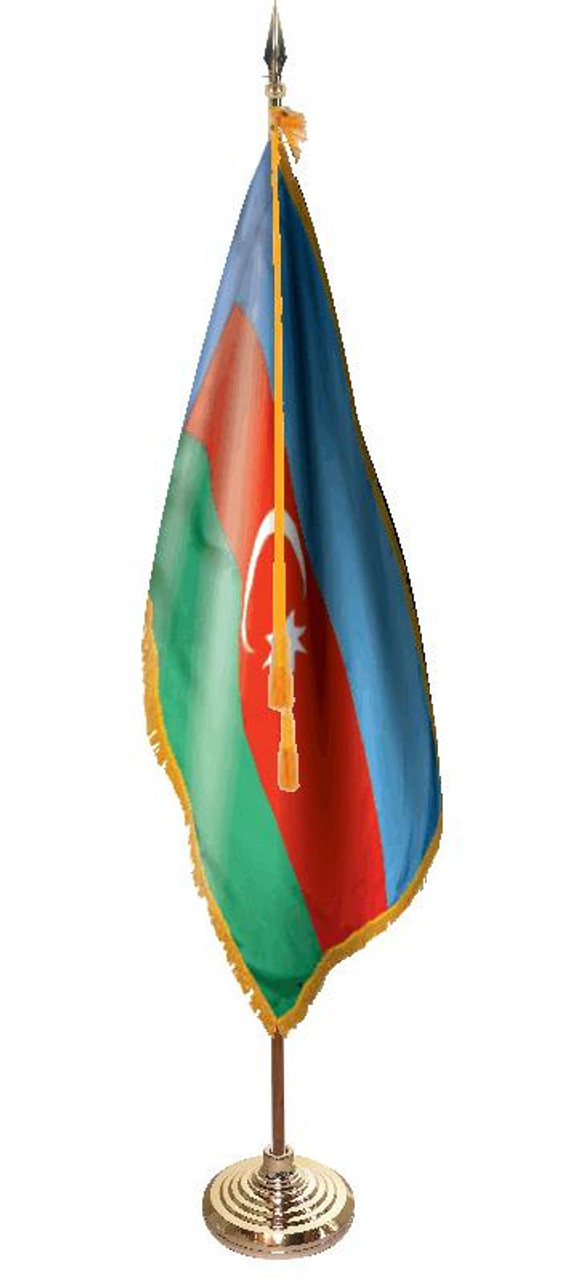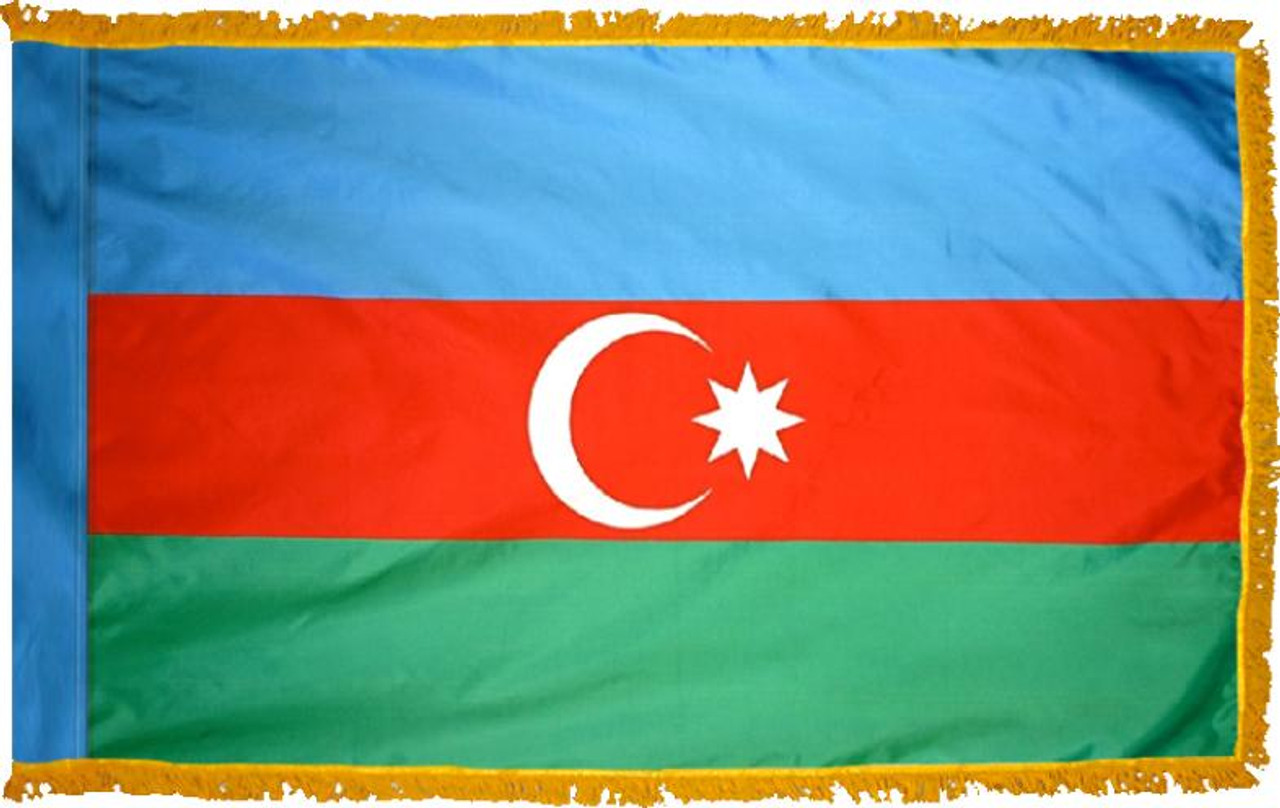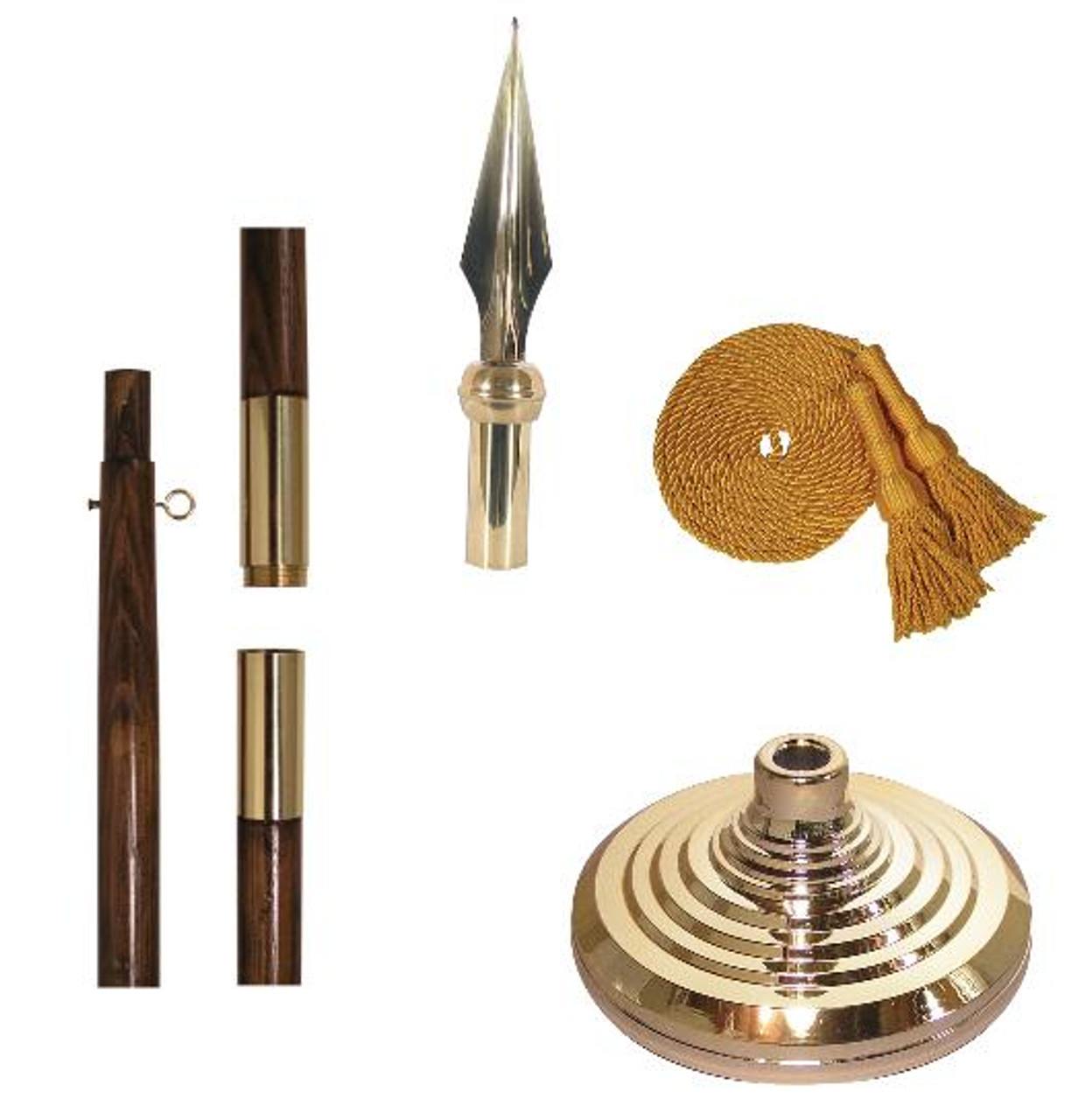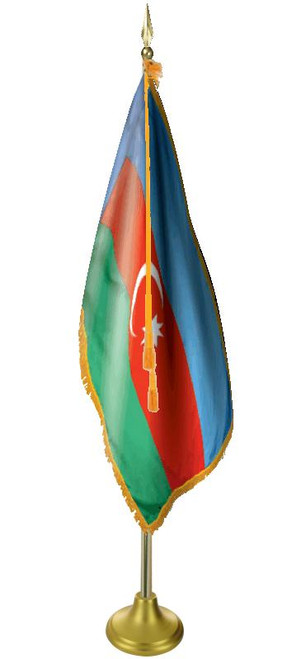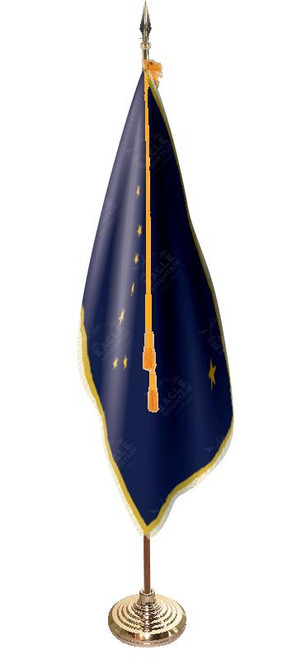Product Description
Our Deluxe Indoor Presentation flagpole sets are beautiful displays that will bring together any stage, office, or embassy. All of our flags are American made, and sourced, using 200 denier nylon for an eye-catching, beautiful flag. The cord and tassel are made from the same gold rayon as the bullion fringe that borders the nation’s flag. The staff is made of durable oak and measures to 1¼” diameter; the staff is two-piece for easy storage, connected by a brass joint in the middle. Most presentation sets feature a brass staff spear, or flat spear, with an Elite 8lb or 15lb stand as well. The stand is universal between 1”, 1 5/32”, and 1¼” staffs.
This Azerbaijan Flag features:
- Rich, Vivid Color
- 200 Denier Nylon
- High Quality Printed Emblem
- 4 Rows of Lock Stitching on the Fly End
- 2 Rows of Lock Stitching on the Header
- Gold Bullion Fringe, Cord, and Tassel
- Brass Staff Spear
- Oak Staff with Brass Hardware
- 8lb Elite Stands are included with 7’ and 8’ pole
- 15lb Elite Stands are included with 9’ poles
- Made in America
Although it was officially adopted February 5th, 1991, the tricolors of Azerbaijan had seen use between 1918 and 1920 when Azerbaijan was an independent state. The Üçrəngli Bayraq, or the Tricolor Flag, features three horizontal bands of blue, red, and green charged with a crescent and eight-pointed star. The blue in the flag symbolizes the Turkic Multinationalism of Azerbaijan, while the red represents the progress to modernize and develop into a democracy, the green is seen to symbolize Azerbaijan’s connection to the Muslim world. While the crescent with star is usually seen as an Islamic symbol, some historians and vexillologists disagree about the use of the eight-pointed star. Fatali Khan Khoyski suggests that the eight-pointed star represents the eight letters used in “Azerbaijan” when written in Arabic. Others believe that the eight points symbolize the eight Turkic peoples of Azerbaijan, while this is argued against by some, the classification of Turkic peoples pre-Soviet era differ from today’s view.

